
Richard E. Aho
4170 N.W.42 St.
Lauderdale Lakes, FL 33319
Phone: 954.771.0435
Cell: 954.496.3838
Fax: 954.771.1875
E-Mail: reaho@comcast.net
OVERVIEW
A Scientific Explanation
“…Secondly, our steam is not generated directly from an external heat source; rather it is produced by hyper-sonic high impact molecular collisions which take place in our impact chambers which are located at the point of energy need. This method of producing super-heated dry steam eliminates both the energy needed for the boiling of the water and the energy lost during the transportation of the steam.
WHERE DOES THE ENERGY COME FROM?…
“Our water jet pump was originally designed to cut aluminum or other metals at up to 40,000 psi. To avoid destruction of our Impact Chamber, we limited our operation to no more than 30,000 psi. Next we use 4 Ford Diesel Piezo Injectors with our choice of Ford Atomizers, in this example they all have 6 orifices.
“In our display, all 4 Piezo Injectors have an identical cycle, each opens for 3 mil seconds 15 times a second as scheduled. This will convert 2 lbs of water a minute to super-heated steam as needed.
“Our test pump uses a 10 H.P. motor, and at 30,000 psi, is limited to 120 lbs. of water an hour, using 7.5 KW hr. In south Florida this costs $0.82 an hour which gives us a cost of super-heated steam at $0.00683 per pound of water.
“Each injection in this test is 0.285 ml x 4 injectors x 15 times per second, resulting in a total of 60 injections per second which is 3600 injections per minute creating 2 lbs of super-heated steam.
“The simple physics behind our new Technology is that we convert liquid water into super-heated steam mechanically. WE DON’T BOIL THE WATER.
“Using U.S. Government charts that measure the Specific Kinetic energy (J/kg): We have performed hundreds of tests with many different size atomizers and as many different velocities. We quickly learned it was a waste of time using lower pressure injections (under 10,000 psi). At first, using lower pressure injections, at 7,000 psi we measured 810 meters/second velocity, and our impact had only 320,000 J/kg, and our molecules just bounced about with no intermolecular separation upon Impact.
“Next using another atomizer and double the pressure (15,000 psi) we reached a super-sonic speed of 1,700 meters per second. You will note that our mechanical advantage DID NOT DOUBLE to 640,000J/kg. Instead, it increased 4 fold, to 1,400,000 J/kg.
“This mechanical advantage comes from the fact that the energy needed to increase the velocity is linear and to double the velocity you double the energy. However, the specific kinetic energy derived from the Impact of the water clusters is increased exponentially. One needs only to look at the projectile speed charts to understand the effect of speed upon the specific energy upon impact.
“With 30,000 psi our velocity exceeds 3,000 meters per second, or 3.7 times our original test at 810 meters/second. The Impact heat at 810 meters/second is 320,000 J/Kg. The result at 3,000 meters/second is 4,500,000 (J/kg). The Mechanical Advantage is simple math. You would expect the result to be 3.7 times or 1,185,185 (J/kg) if the increase was linear. However, exponentially, our Impact heat increased 14 times. 320,000 x 14 = 4,480,000 Speed to impact energy ratios are available in most physics books.
“In conclusion, at an incredibly low cost of $0.00683 for converting each pound of water into steam, our MIST system is far less expensive that natural gas or nuclear power, and is the least expensive and environmental friendly energy creating system in history.
“The energy we must apply in order for our 10 HP pump to produce the required pressure to process 120 lbs. of water per hour is 7.46 Kw which is 124.3 watts per minute to pump 2 lbs. 0f water at 30,000 psi and a velocity of 3,000 m/s. This gives us and output of 1139 watts using only 124.3 watts of energy. The rest of the energy comes from the energy contained within the bonding of the molecules of water…”
May 28, 2013
Richard Aho says:
“I agree, but nobody cares. It is well known from tests around the planet, that you have two ways to liberate the hydrogen bond energy, discharged in the form of water kinetic energy. After the discovery of hydrogen bond energy liberation in water turbines in 1923 by American chemist Gilbert Lewis, the chemistry establishment simply failed to explore the effects it has on chemistry experiments.
” The Anomalous Fragmentation of Water Clusters at UltraFast Impacts” This paper shows that at very high velocity impacts the cluster will fragment completely into neutral molecules and one hydronium ion. This happens at 1,500 ms. Quite easy to do using modfified Ford diesel Injectors. However nobody believes this liberated engery is related to the latent heat of water. Nobody understands how I can mechanically change liquid water into super-heated steam by impact heating. With out boiling the water, upon contact we experience a water arc explosion, termed the cluster electric effect (CEE) during the short time of surface contact which is on the order of a few picoseconds.
“History of Water Arc Explosions. First noticed at Harvard in 1907 by Trowbridge, second World War Frungel (1948) published his results, freely admited that he was unable to explain the phenomenon. In 1969 US Bureau of mines noticed the output energy was 156% of the input. But was treated as an error. In the mid-1980’s at MIT It was shown the discharge of 3.6 KJ of stored capacitor energy would create pressures in excess of 20,000 atm ( 286,000 psi) in 7ml of water.
“Water Arc Explosions have been harnessed for energy, by Mist ( Molecular Impact Energy) But this is not acceptable because it violates energy conversation, the American chemistry establishment refuses to accept, that Impact heating at 1.7 Km second can discharge energy from hydrogen bonds.
“We are running a 113 cubic engine by liberating the energy in water arc explosions, other tests we generate super-heated steam using about 500 btu a lb, but nobody accepts our results, because using current education we violate energy conversation. Nobody cares enough, to see if an unknown energy source comes into play.

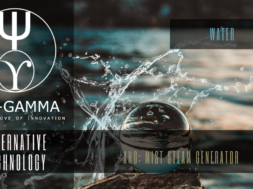

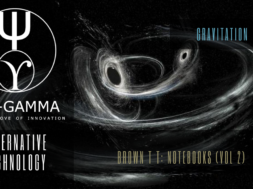
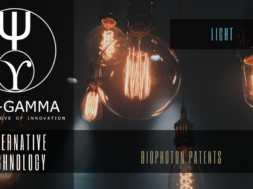



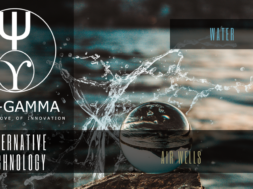
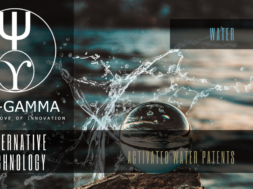
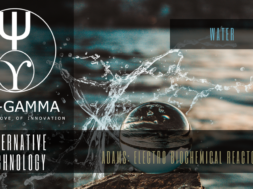
Entdecken Sie die besten Weinverkostungen in Wien auf [url=https://weinverkostung.neocities.org/]weinverkostung in wien[/url].
Besucher konnen hier erstklassige Weine in malerischer Umgebung probieren.
Die Weinverkostungen in Wien sind perfekt fur Kenner und Neulinge. Zusatzlich gibt es oft kulinarische Begleitungen, die den Genuss erhohen.
#### **2. Die besten Orte fur Weinverkostungen**
In Wien gibt es zahlreiche Lokale und Weinguter, die Verkostungen anbieten. Auch moderne Weinkeller in der Innenstadt bieten exklusive Erlebnisse.
Einige Winzer veranstalten Fuhrungen durch ihre Kellereien. Dabei erfahren Besucher mehr uber die Herstellung der Weine.
#### **3. Wiener Weinsorten und ihre Besonderheiten**
Wiener Weine sind vor allem fur ihre Vielfalt bekannt. Der beliebte Gemischte Satz ist eine lokale Spezialitat, die aus mehreren Traubensorten besteht.
Die Bodenbeschaffenheit und das Klima pragen den Geschmack. Dank nachhaltiger Anbaumethoden ist die Qualitat stets hoch.
#### **4. Tipps fur eine gelungene Weinverkostung**
Eine gute Vorbereitung macht die Verkostung noch angenehmer. Es empfiehlt sich, langsam zu trinken, um die Nuancen zu schmecken.
Gruppenverkostungen bringen zusatzlichen Spa?. Ein Weinjournal kann helfen, personliche Favoriten festzuhalten.
—
### **Spin-Template fur den Artikel**
#### **1. Einfuhrung in die Weinverkostung in Wien**
Wien ist nicht nur fur seine historischen Sehenswurdigkeiten bekannt, sondern auch fur seine lebendige Weinkultur.
#### **2. Die besten Orte fur Weinverkostungen**
In Wien gibt es zahlreiche Lokale und Weinguter, die Verkostungen anbieten.
#### **3. Wiener Weinsorten und ihre Besonderheiten**
Die Bodenbeschaffenheit und das Klima pragen den Geschmack.
#### **4. Tipps fur eine gelungene Weinverkostung**
Ein neutraler Geschmack im Mund vor der Verkostung verbessert das Erlebnis.
Discover exquisite Austrian wines at [url=https://wine-tasting-wien.netlify.app/]https://wine-tasting-wien.netlify.app/[/url] and immerse yourself in Vienna’s vibrant wine culture.
Die osterreichische Hauptstadt bietet eine einzigartige Mischung aus Tradition und Moderne. Die Region ist bekannt fur ihren exzellenten Wei?wein, besonders den Grunen Veltliner. Jahrlich stromen Tausende von Besuchern in die Weinkeller der Stadt.
Das milde Klima und die mineralreichen Boden begunstigen den Weinbau. Das gibt den Wiener Weinen ihren unverwechselbaren Charakter.
#### **2. Beliebte Weinregionen und Weinguter**
In Wien gibt es mehrere renommierte Weinregionen, wie den Nussberg oder den Bisamberg. Diese Gebiete sind fur ihre Spitzenweine international bekannt. Familiengefuhrte Weinguter bieten oft Fuhrungen und Verkostungen an. Gaste konnen die Leidenschaft der Winzer hautnah erleben.
Ein Besuch im Weingut Wieninger oder im Mayer am Pfarrplatz lohnt sich. Sie sind bekannt fur ihre ausgezeichneten Jahrgange.
#### **3. Ablauf einer typischen Weinverkostung**
Eine klassische Wiener Weinverkostung beginnt meist mit einer Kellertour. Dabei erfahrt man Wissenswertes uber Rebsorten und Vinifizierung. Danach folgt die Verkostung unterschiedlicher Weine. Die Aromen werden von den Experten detailliert beschrieben.
Haufig werden die Weine mit lokalen Kasesorten oder Brot serviert. Diese Kombination ist ein Highlight fur Feinschmecker.
#### **4. Tipps fur unvergessliche Weinverkostungen**
Um das Beste aus einer Weinverkostung in Wien herauszuholen, sollte man vorher buchen. Einige Anbieter bieten auch private Verkostungen an. Zudem lohnt es sich, auf die Jahreszeiten zu achten. Im Herbst finden oft Weinlesefeste statt.
Ein guter Tipp ist auch, ein Notizbuch mitzubringen. Viele Gaste schatzen spater die Erinnerungen an die Verkostung.
—
### **Spin-Template fur den Artikel**
#### **1. Einfuhrung in die Weinverkostung in Wien**
Die Weinkeller Wiens locken mit ihrem authentischen Charme und kostlichen Tropfen.
#### **2. Beliebte Weinregionen und Weinguter**
Dabei lernt man viel uber die Herstellung und Geschichte der Weine.
#### **3. Ablauf einer typischen Wiener Weinverkostung**
Diese Kombination ist ein Highlight fur Feinschmecker.
#### **4. Tipps fur unvergessliche Weinverkostungen**
Im Herbst finden oft Weinlesefeste statt.
—
**Hinweis:** Durch Kombination der Varianten aus den -Blocken konnen zahlreiche einzigartige Texte generiert werden, die grammatikalisch und inhaltlich korrekt sind.
[url=https://natyazhni-steli-vid-virobnika.biz.ua/]потолки натяжные[/url]
Они отличаются практичностью и долговечностью.
Компания “natyazhni-steli-vid-virobnika.biz.ua” предлагает качественные потолки напрямую от производителя. Мы используем только проверенные материалы.
#### **2. Преимущества натяжных потолков**
Одним из главных плюсов натяжных потолков является их влагостойкость. Даже при затоплении потолок останется целым.
Еще одно преимущество — огромный выбор цветов и фактур. Дизайнеры помогут создать уникальный стиль для вашего помещения.
#### **3. Производство и материалы**
Наша компания изготавливает потолки из экологически чистого ПВХ. Сертификаты подтверждают его гипоаллергенность.
Технология производства гарантирует прочность и эластичность полотна. Каждое полотно проходит проверку перед отправкой клиенту.
#### **4. Установка и обслуживание**
Монтаж натяжных потолков занимает всего несколько часов. Уже через день вы сможете пользоваться обновленным помещением.
Уход за потолком не требует особых усилий. Пятна и пыль легко удаляются без специальных средств.
—
### **Спин-шаблон статьи**
#### **1. Введение**
Натяжные потолки — это стильное и удобное решение для любого дома.
#### **2. Преимущества натяжных потолков**
Выбор оформления практически безграничен — от классики до 3D-эффектов.
#### **3. Производство и материалы**
Наша продукция соответствует строгим экологическим стандартам.
#### **4. Установка и обслуживание**
Наши специалисты устанавливают потолки с точностью до миллиметра.
Лучшие онлайн казино всегда имеют прозрачные условия и лицензию. Казино онлайн на реальные деньги с выводом — оптимальный вариант. Сайт topovye-kazino-onlajn.biz.ua помогает быстро выбрать казино. Играть в казино онлайн стало проще благодаря гривневым счетам.
Реальное онлайн казино отличается прозрачными правилами.
Топ честных онлайн казино формируется годами. Надежное онлайн казино всегда имеет понятные лимиты. Казино реальные деньги — всегда вопрос доверия. Рейтинг казино онлайн полезен даже опытным игрокам.
Хороший магазин мотозапчастей с адекватными ценами и понятным каталогом. Удобный каталог и нормальные цены, особенно для Киева [url=https://zapchasti-dlya-motocikla.biz.ua]мотозапчасти Киев[/url]. Если сравнивать сайты мотозапчастей, этот выглядит более продуманным.
Для тех, кто ценит время, хороший онлайн-магазин. Если нужен каталог мотозапчастей без хаоса — вам сюда. Заказывал моторасходники — всё пришло аккуратно упаковано. Не ожидал, что выбор будет настолько большим. Удобно, что есть доставка по Украине. Понравилось, что есть всё — от мелочей до крупных узлов. Магазин мотозапчастей купить — без лишней суеты.